

Take your case and remove the side(s) that allows you access to the inside of
the case. Some ATX cases do not allow you to access anything from the right
side of the case as you look at it from the front. BTX cases are accessed from
the right side of the case. The Antec P 180 case I am currently using is sort
of a hybrid ATX case with the PSU at the bottom of the case as the BTX specs
state, but the motherboard area is all ATX spec.
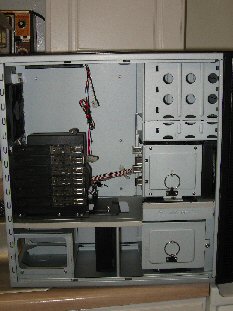

You can mark the holes with a felt tip pen to know where you have to screw the
standoffs into. Make very sure you install the standoffs into the proper holes
as if you don't you can short the board out on first start up or it won't even
boot up. Once the standoffs are installed you can assemble your motherboard.
To install your CPU, lift the locking arm up and place the CPU in the socket
with the little triangle (or other mark) on the CPU where the hinge for the
locking lever is:
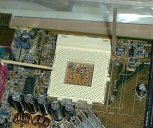
|
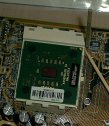
|
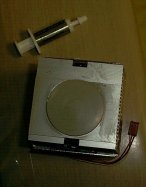
|
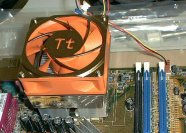
|
Install your RAM into their sockets and push down carefully until the RAM is
competely seated and the locks are latched. RAM can only be installed one way.
Make sure the notch as indicated by the pointer is in the right place according
to the motherboard. If the notch doesn't line up either way, you may have
picked up the wrong kind of RAM. Get the right RAM now while you still have the
motherboard out. You won't have to worry about trying to install it in a
smaller work area and you will be able to see what you are doing.

|
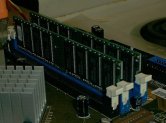
|
Once these items are mounted on the motherboard, mount it onto the motherboard
tray you installed the standoffs on earlier. Make sure that you put a screw in
every hole that you can for support. If you have the paper washers, use them
under the heads of the screws before installing the screws. Once that is done
install the IO plate that came with the motherboard in the back of the case
before installing the motherboard and tray back into the PC.

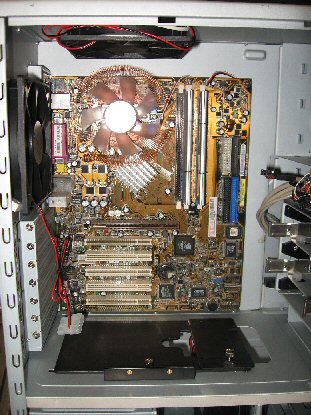
If you have new drives or are adding more drives as you build your PC, you will
need to make sure the jumpers are set properly as you see here:
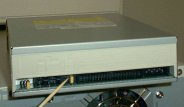
|
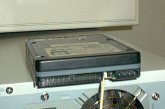
|
Install your drives in the case where you want them or if you have removable
drive cages, install them in the cages. If your cages have silicone or rubber
grommets, ensure that they are in place and that you do not overtighten the
screws. If you have rails, install them too. Install all drives and cages into
their respective spaces once you have finished.
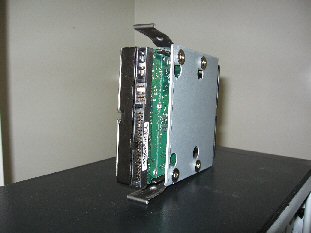
|
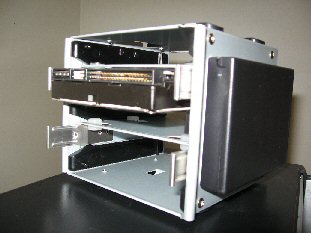
|
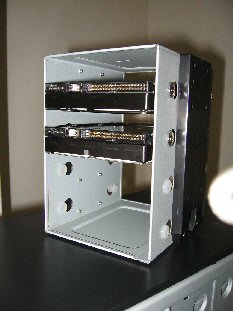
|
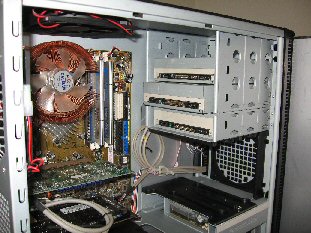
|
Next install the wiring for any Firewire or extra USB ports that may come with
the motherboard along with the wiring for the power button, system speaker, HDD
activity light, reset button and any audio wires that may be with the case
which may even include from panel USB ports.
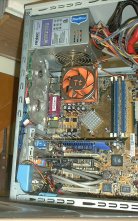
Updated 8-2-2002